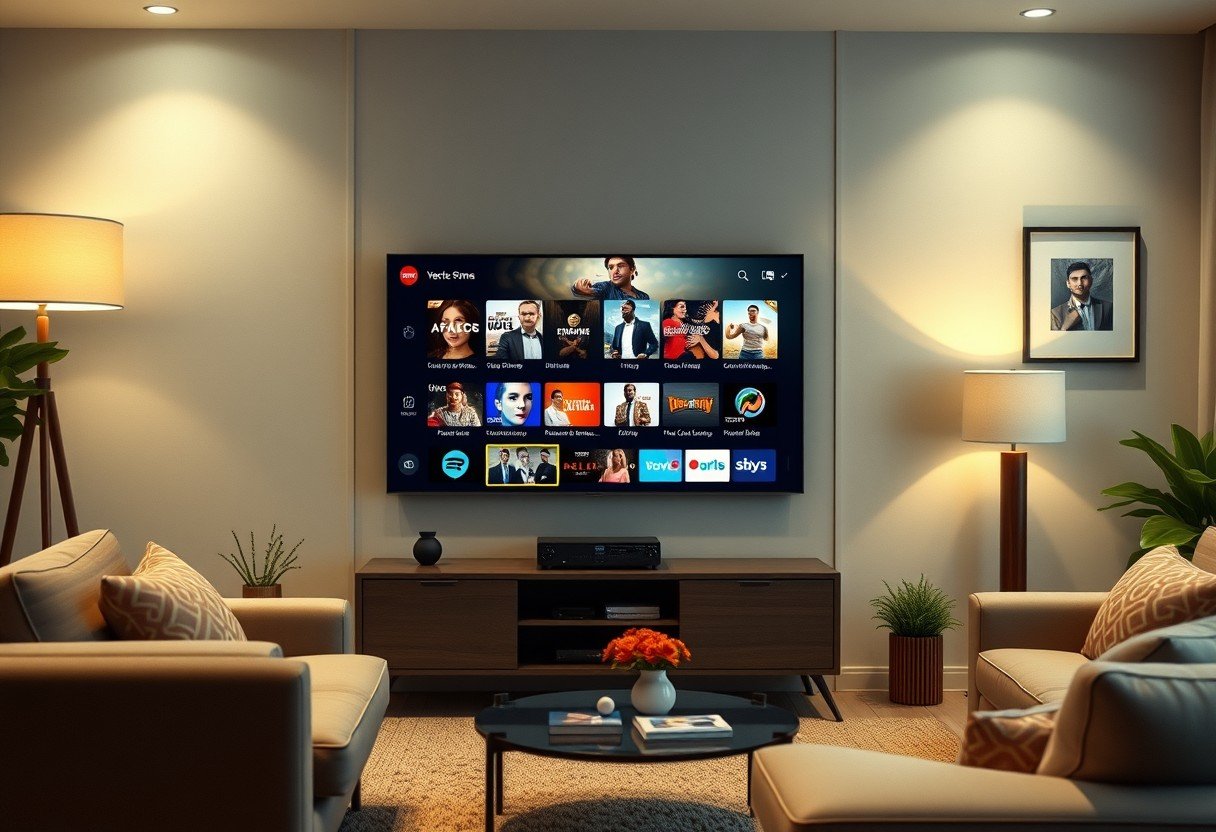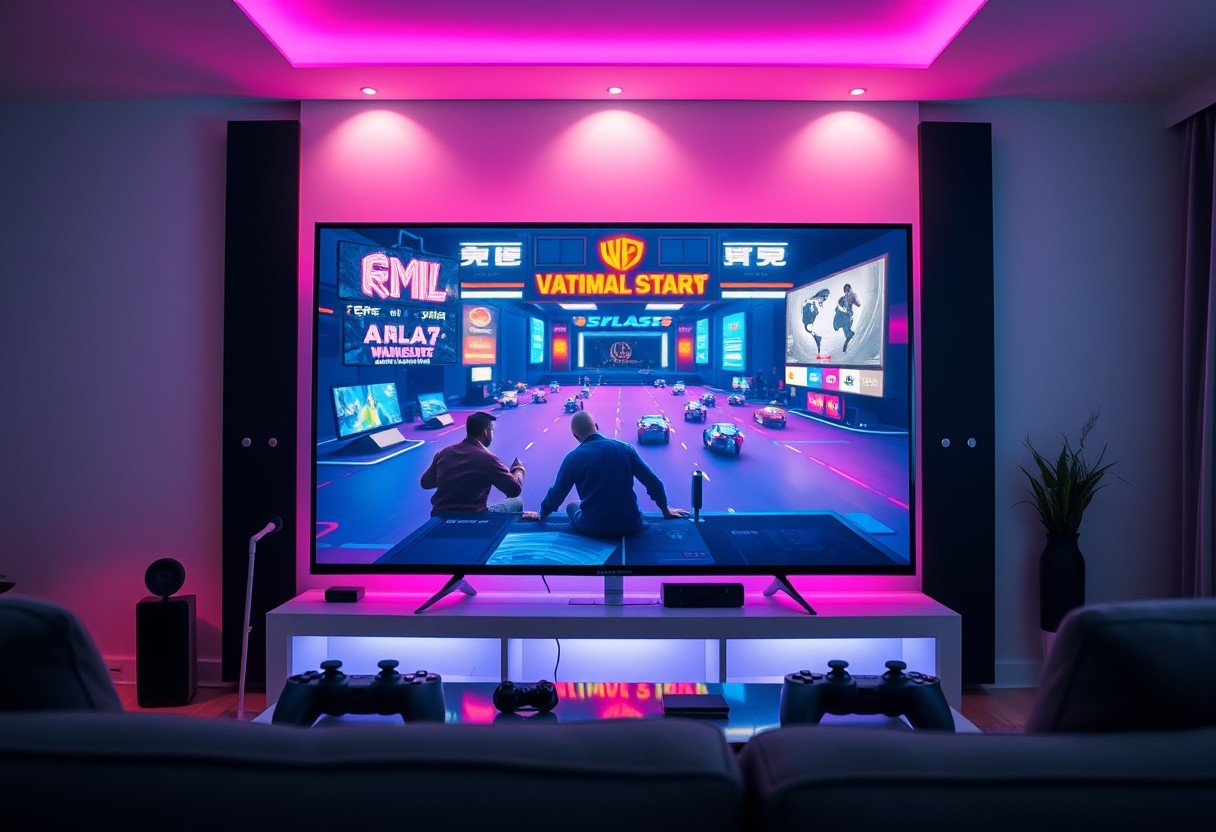Over the last decade, TV technology has changed so much that many people wonder what happened to plasma TVs. Production from major brands like Panasonic and Samsung stopped around 2014 because of falling demand and the rise of newer LED and OLED screens. While you can’t buy them new anymore, this guide explains why they were so popular, what replaced them, and if a used one is still worth considering today.
Why Did They Stop Making Plasma TVs?
The main reason plasma TV production ended was the shift in technology and consumer preference. Newer technologies like LED and OLED offered significant advantages that plasma couldn’t compete with.
By the mid-2010s, manufacturers had perfected LED technology, making TVs that were much thinner, lighter, and more energy-efficient. Consumers loved these sleek designs that could be easily mounted on a wall and didn’t consume as much electricity.
Panasonic, a leader in plasma technology, announced it would stop production in 2014, with other major players like Samsung and LG following suit. The market had clearly spoken, preferring the brighter, more efficient, and slimmer profiles of LED and OLED TVs. This marked the end of an era for a display technology once celebrated by home theater enthusiasts.
The Unforgettable Picture Quality of Plasma Displays
Despite being an outdated technology, plasma TVs still have a dedicated fan base for one primary reason: their incredible picture quality. For many years, no other technology could match them in certain key areas.
Plasma TVs were famous for their ability to produce deep, inky blacks. Because each pixel generated its own light, it could be turned off completely, creating a true black. This resulted in an amazing contrast ratio that made movies look incredibly cinematic, especially when watched in a dark room.
Furthermore, they offered superior color accuracy and excellent motion handling, which meant fast-action scenes in sports and movies appeared smooth without any blurring. It’s these unique display characteristics that some viewers argue have never been perfectly replicated, giving older plasma models a special, almost collectible status.
What were the Downsides of Plasma Technology?
While plasma TVs delivered a stunning picture, they came with several notable disadvantages that contributed to their decline. These issues made them less practical for the average consumer compared to the emerging alternatives.
One of the biggest concerns was the risk of screen burn-in. If a static image, like a channel logo or a video game health bar, was left on the screen for too long, it could leave a permanent ghost image. While later models had features to reduce this risk, it remained a significant worry for users.
Plasma TVs were also known for being:
- Heavy and Bulky: The technology required a thicker and heavier construction, making them difficult to move and mount on a wall.
- Energy Hungry: They consumed significantly more power than LCD TVs of the same size, leading to higher electricity bills.
- Less Bright: Plasmas weren’t as bright as their LCD counterparts, which made them less ideal for viewing in brightly lit rooms.
These practical drawbacks, combined with their higher production costs, made them a tougher sell as LED technology became cheaper and better.
Can You Still Buy a Plasma TV Today?
No, you cannot buy a new plasma TV from any mainstream retail store. Since production has completely stopped, the only way to get one is through the second-hand market.
You can often find used or refurbished plasma TVs on online marketplaces like eBay, Craigslist, or at local used electronics shops. These can sometimes be found at very low prices, making them a tempting offer for someone looking for a high-quality picture on a tight budget.
However, buying a used plasma TV comes with risks. It is crucial to inspect the TV for any signs of screen burn-in and to verify it is in good working condition. Since these units are old, they have no warranty, and finding replacement parts for repairs is nearly impossible. You are buying a piece of legacy technology, so caution is advised.
How do Modern TVs Compare to Plasma?
Modern TV technologies, particularly OLED and QLED, have not only caught up to plasma but have surpassed it in most areas. OLED is considered the spiritual successor to plasma, offering perfect black levels and even better color reproduction.
OLED TVs work similarly to plasma in that each pixel is self-lit, allowing for infinite contrast and vibrant colors. However, they are incredibly thin, energy-efficient, and don’t have the same severe burn-in risks. QLED TVs, which are a type of advanced LED TV, offer outstanding brightness and a wide range of colors, making them perfect for any viewing environment.
Here is a simple comparison of the technologies:
| Feature | Plasma TV | OLED TV | QLED TV |
| Black Levels | Excellent | Perfect | Very Good |
| Brightness | Low | Good | Excellent |
| Energy Use | High | Moderate | Low |
| Lifespan | Good (up to 100,000 hrs) | Excellent (100,000+ hrs) | Excellent (100,000+ hrs) |
Is a Used Plasma TV a Good Idea for You?
Deciding whether to buy a used plasma TV depends entirely on your needs and expectations. For most people, a new, modern TV is a much safer and better long-term investment.
However, a well-maintained plasma TV can be a fantastic bargain for a specific type of user. If you are a movie lover creating a dedicated home theater in a dark room and find a top-tier model in great condition for a very low price, it could provide a viewing experience that rivals much more expensive new TVs.
Keep in mind that you will be sacrificing modern features like 4K resolution, HDR support, and smart TV apps. For everyday use in a living room, it is highly recommended to invest in a modern OLED or QLED TV. They offer superior features, manufacturer support, and peace of mind.
Frequently Asked Questions about Plasma TVs
Are plasma TVs still manufactured?
No, plasma TVs are no longer being made. All major manufacturers, including pioneers like Panasonic and Samsung, stopped production by 2014 due to the rising popularity and advantages of LED and OLED technologies.
What are the main advantages of plasma TVs compared to modern alternatives?
Plasma TVs are best known for their exceptional black levels, which create a high contrast ratio perfect for watching movies in dark rooms. They also offered excellent color accuracy and smooth motion handling, though modern OLED TVs now match or exceed this performance.
How long does a plasma TV last?
The lifespan of a plasma TV is typically rated for about 100,000 hours of use until it reaches half its original brightness. However, their actual longevity can vary based on usage, and they are susceptible to issues like screen burn-in over time.
What replaced plasma TV technology?
OLED technology is widely considered the true successor to plasma. Like plasma, OLED pixels create their own light, allowing for perfect blacks and infinite contrast, but in a much thinner, lighter, and more energy-efficient package.
Are plasma TVs good for gaming?
Plasma TVs were once great for gaming due to their fast response times and low input lag. However, the risk of screen burn-in from static game elements like health bars or maps makes them less ideal than modern OLED or high-end LED TVs designed for gaming.
Can you still get a plasma TV repaired?
Repairing a plasma TV today is very difficult. Since they are no longer in production, new replacement parts are not available. Any repairs would rely on finding salvaged parts from other old units, which can be challenging and unreliable.









Leave a Comment